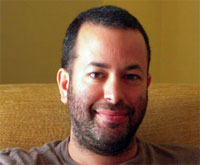HOW TO PREVENT A PANDEMIC
The swine flu outbreak seems to have emerged without warning. Within a few days of being noticed, the flu had already spread to the point where containment was not possible. Yet the virus behind it had to have existed for some time before it was discovered. Couldn’t we have detected it and acted sooner, before it spread so widely? The answer is likely yes — if we had been paying closer attention to the human-animal interactions that enable new viruses to emerge.
While much remains unknown about how pandemics are born, we are familiar with the kinds of microbes — like SARS (severe acute respiratory syndrome), influenza and H.I.V. — that present a risk of widespread disease. We know that they usually emerge from animals and most often in specific locations around the world, places like the Congo Basin and Southeast Asia.
By monitoring people who are exposed to animals in such viral hotspots, we can capture viruses at the very moment they enter human populations, and thus develop the ability to predict and perhaps even prevent pandemics.
Over the past 10 years, my colleagues and I have demonstrated that such monitoring is possible. In Cameroon, we have studied hunters who are exposed to the blood and body fluids of monkeys, bats, wild pigs and other hunted animals. By collecting specimens from both the hunters and their prey, we have discovered previously unknown viruses and documented how they’ve jumped from animals to humans. We have seen, for example, a gorilla retrovirus, never before seen in humans, infect one of our study subjects.
Then, by monitoring infected people and those who are in contact with them, we observe what effects these novel viruses have on people, and how easily they can move from person to person.
We can also identify a virus’s genetic and immunological signatures and other biological information that is needed to create diagnostic tests, vaccines and treatments — so that when a disease appears, it is possible to respond as quickly as possible.
Had similar monitoring systems been in place at farms in Mexico, where the current swine flu outbreak is assumed to have emerged, perhaps we would have been able to identify the movement of the virus at or near the point where it entered humans. Such information could have significantly speeded up our response.
We are not alone in working on pandemic prevention. Many federal agencies — including the Centers for Disease Control and Prevention, the United States Agency for International Development and the Department of Defense — as well as the World Health Organization and private conservation organizations like the Wildlife Conservation Society and the Wildlife Trust are also looking for ways to stop pandemics early. But much more work is needed.
My organization and its collaborators have recently set up virus monitoring stations in China, Laos, Madagascar, Malaysia and the Democratic Republic of Congo. Yet this is just a beginning. To establish a worldwide safety net, we would need to monitor thousands of people exposed to animals in dozens of sites around the world — not only hunters but also people working on farms and in animal markets. It is important that the American government make pandemic prevention a priority and devote more resources to expanding disease surveillance in people and in wild and domestic animal populations throughout the world.
Our current global public health strategies are reminiscent of cardiology in the 1950s — when doctors focused solely on responding to heart attacks and ignored the whole idea of prevention.
We needn’t have been so surprised by the swine flu last week, and we must make sure that we are not caught off guard by the epidemics that will certainly follow it.
[First published by the OpEd page of The New York Times, April 30, 2009]


